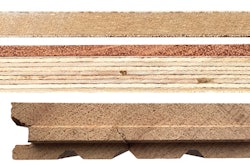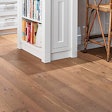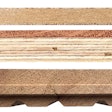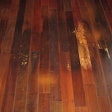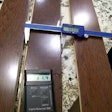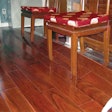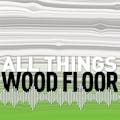Q: What are the differences between engineered and solid prefinished floors?
A: For centuries, solid hardwood floors have been installed around the world. Hundreds of years ago, utilizing basic raw material for building was a necessity, and lumber was a natural choice for flooring. In recent decades, new technology in manufacturing has allowed for greater yield from the harvested logs. By producing an engineered or ply-type construction product, the raw material utilization increased substantially.
Today, hardwood floors continue to be a desired option for homeowners, design specifiers and architects. Commercial and residential customers alike recognize the value and beauty of hardwood flooring. What may not be as easily recognized, however, are the many differences in the products offered byprefinished hardwood flooring manufacturers.
Solid and engineered prefinished hardwood floors each have a unique set of characteristics. Understanding the differences in their construction is very important. Salespeople must help consumers understand their features and benefits. If this does not happen, the end user's expectations may not be met.
This could lead to a complaint that is not related to a manufacturing defect or an installation problem, but rather a misunderstanding of the product.
Engineered Advantages
Engineered prefinished wood flooring has many advantages:
1) Stability. This type of veneer construction is more dimensionally stable than solid wood floors. Because each layer of wood is glued to the next layer at a 90-degree angle, expansion and contraction is greatly reduced. Wood expands and contracts primarily in the width; therefore, gluing the veneers together in this manner reduces the effects of expansion and contraction. This also minimizes the effect of the flooring gapping or cupping as the indoor environment changes from season to season.
2) Installation versatility. There are engineered wood floors that can be installed via nail or staple, gluing directly onto the subfloor or floating. Engineered floors also are appropriate for below-grade installation.
3) Cost. Engineered flooring can be less expensive than solid flooring. Many of these products are constructed of several thin veneers of wood glued toone another, which allows for a much better yield of the raw materials. Thus, the cost of raw materials is less than that of solid products. The lower layers of the product can be less than perfect, as they will not be seen by the consumer once the floor is installed.
Solid Flooring Has Different Benefits
The advantages of solid hardwood floors are different from those of engineered wood:
1) Wear layer. A solid hardwood floor generally has a thicker wear layer when compared with a typical engineered floor. This allows customers to sand and refinish their floors time and time again, even changing the color of the floor if desired.
2) Grain pattern. Many engineered products have a top layer that is peeled from the log. Because solid boards are sawn from the raw log, the grain pattern is tighter and denser when compared with peeled veneers. In addition to the aesthetic difference between peeled and sawn wear layers, a solid sawn top layer adds durability to the flooring.
Installation of solid hardwood can be more complex than that of engineered flooring. Requirements for proper subfloor moisture conditions, the flooring's moisture content, and the climate in which the flooring is to be installed all are usually more rigid than they are for engineered flooring.
Most solid hardwood flooring must be installed via a nail-down or staple-down method, however, now there are a few manufacturers that produce products that may be glued or even floated, eliminating the need for a wood subfloor. Always follow the manufacturer's recommendations.
The most important matter to a sales staff representing hardwood flooring is education. Theymust understand the many features and benefits both engineered and solid prefinished hardwoodfloors have to offer. Then, they must pass this information on to the end user. Experience tells us that if the customer is educated about not only the features and benefits, but more importantly, on the characteristics of prefinished solid or engineered hardwood, they are more likely to be a satisfied customer. Providing this invaluable information allows consumers to make aninformed decision about which type of flooring will work best in their homes and with their lifestyles. Many of today's top manufacturers offer free sales and installation classes, and the NWFA offers factory-finished wood flooring installationclasses around the country. Participating in these valuable classes will help any sales staff succeed in creating informed, and satisfied, consumers.
















